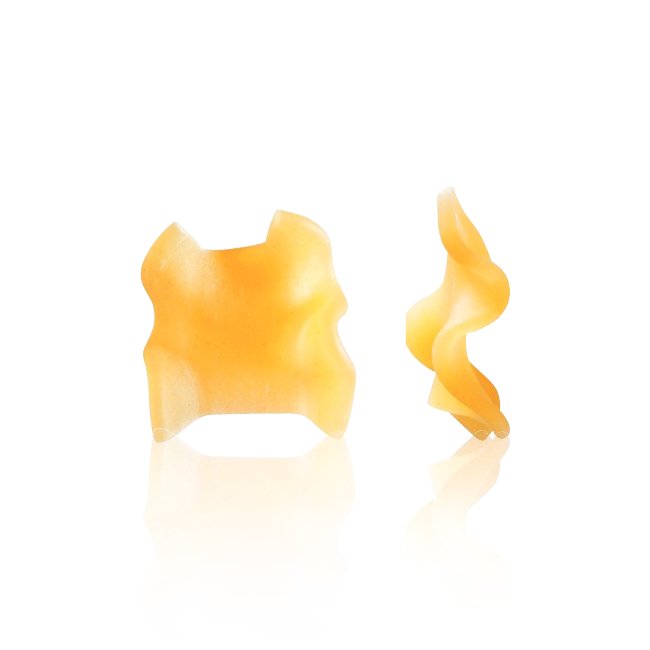
Characteristics, History and Pairings
Today, mafaldine is the name of a short pasta with a long and quite unique story, considering that originally it was a type of long pasta.
Initially it was known as fettuccelle riccie, but once it was dedicated to Princess Mafalda of Savoy it became known as mafaldine or reginette. The wavy edges were created to represent the fine embroidery on the dresses that dames and queens wore at the time.
These long flat pasta ribbons, approximately 1 cm wide, are wavy on both edges. Once cooked, the wavy edges, which are thicker than the fine central part of the pasta ribbons, maintain a firm texture and help enhance the flavour of the various sauces this pasta is paired with.
Mafaldine pasta was created as a long durum wheat semolina pasta but over the years two more variations became popular: a fresh version made with eggs and a short version, mafaldine corte.
Cooking Time
10 minutes
Region of Origin
Mafaldine pasta was first made in Naples in honour of Princess Mafalda of Savoy and soon became popular across Italy. Due to its origin, this shape of pasta has always been considered perfect for fine and elaborate dishes, such as those served at royal banquets.
Best Pairings
In Naples, mafaldine pasta is traditionally served with ragu sauce with the addition of fresh local ricotta cheese. In general, this shape of pasta is paired with thick, hearty, and elaborate sauces such as game ragu sauce or creamy sauces with strong flavoured cheeses like caciocavallo, as well as with creamy mushroom sauces.
Ingredients
Durum wheat semolina and water.
Average nutritional values for 100 g of raw product
– Energy: 1508 kJ / 356 Kcal
– Fat: 1.5 g
– of which saturates: 0.4 g
– Carbohydrate: 72 g
– of which sugars: 3.0 g
– Fibre: 3.0 g
– Protein: 12 g
– Salt: < 0.01 g
Cooking Tips
Do you cook pasta in a sustainable way? Here are a few tips that can make a difference.
1. Don’t waste water, use only the necessary amount: 1 litre of water for every 100 grammes of dry pasta
2. Cooking with a lid will save time and gas or electricity and the water will boil sooner
3. Add the salt when the water starts boiling and add the pasta immediately after
4. Put the lid back on halfway through the cooking time, switch off the gas (or electric hob) and finish cooking your pasta in the hot water inside the covered pot.